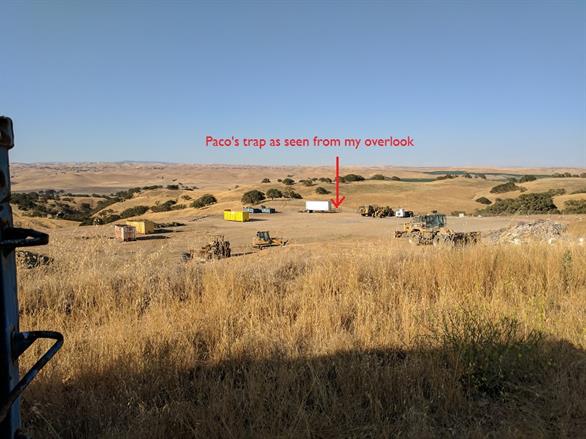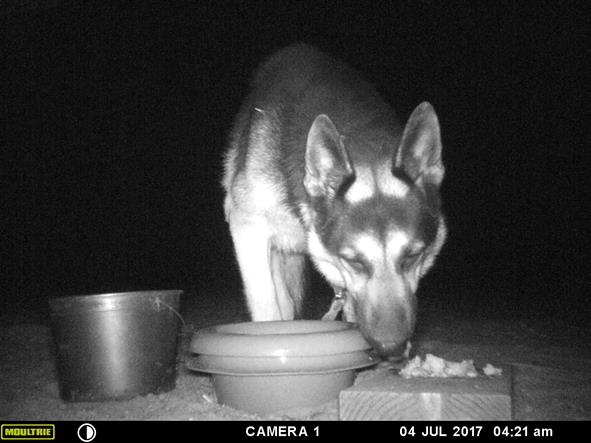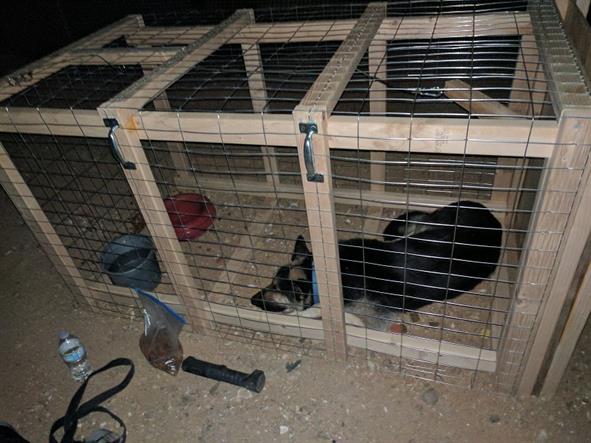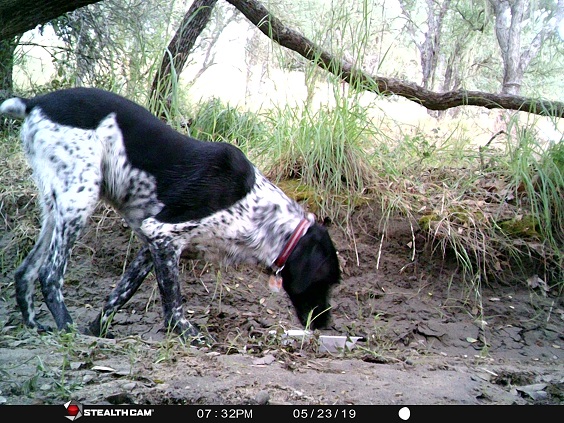3 - Trap the Dog
Trapping a dog presumes you are familiar with the trap and the safe use of it. No trap should be left unattended for any extended period of time.
Preplan Your Actions
Always preplan and arrive fully equipped to manage and handle a trapped dog. To eliminate uncertainty, put your supplies in a single plastic storage container "trap supplies". It is better to be over equipped than to discover you are missing vital tools in the field. Rope, gloves, flashlight, dog food, can opener, water, extra bowls, extra batteries for the camera(s) and other necessities.
Place the trap at the selected location where the dogs presence has been verified. Move the kibble, tune and water inside the trap (make sure the kibble and tuna are fresh). Place your camera(s) to monitor the trap. Doing so will allow you to see what went wrong if the dog did not enter the trap (e.g. dog did not appear, dog appeared but was afraid to enter the trap, trap did not activate properly and so on).
Preplan a location you can quietly observe and or listen for a trap activation. This should be downwind of the dog if possible (i.e. you don't want the dog to be able to smell you as it may keep the dog away).
Patience is Key
Give the dog lots of time to detect the presence of the food in the trap and to enter the trap. It may be one hour, or it could be eight hours or more. Arrived prepared to stay the amount of time needed (food, clothing, warmth). Silence any electronic devices you have, such as cell phone, radio, etc.).
After Trapping Actions
When the dog is trapped, make your presence known but be slow and gentle in your movements. Allow the dog to settle down, attempt to calm it with your voice and a few treats. Always use extreme caution with any trapped dog, do not assume that it will not bite you.
Once the dog has settled, it is time to transport the dog back to a safe and secure location. Ideally the dog would be transported in the trap directly to a secure area. Often this is not possible, so the dog ust be secured before getting it out of the trap. This must be practiced beforehand. The best practice is to use two slip leashes. One goes around the dogs neck in the typical way. The other is looped around the dogs chest, just behind its front legs. Then the two leashes (or ropes) are tied together near the dogs neck, forming an ad hoc harness which the dog cannot escape.
Have a second individual open the trap door while you securely hold the leashes. Be prepared for the dog to bolt. Even if the owner is present, do not remove the ad hoc harness until the dog is in a secure environment.





